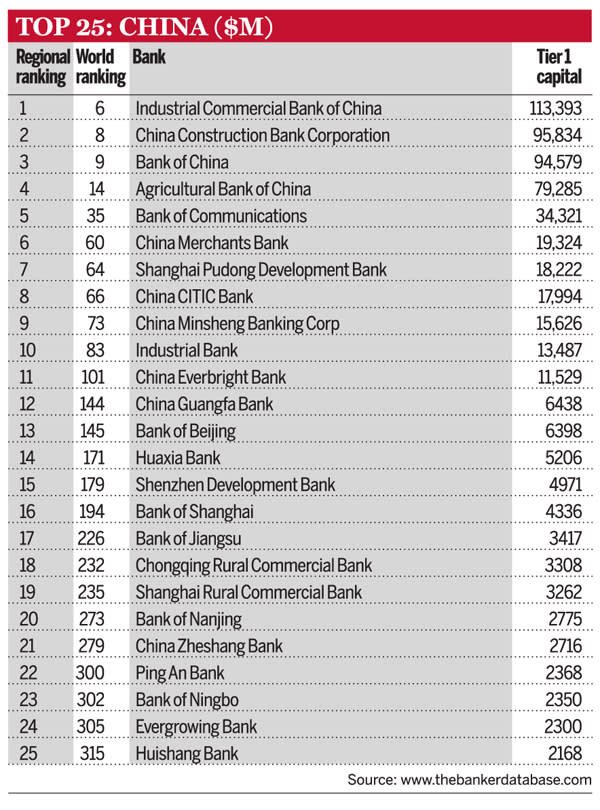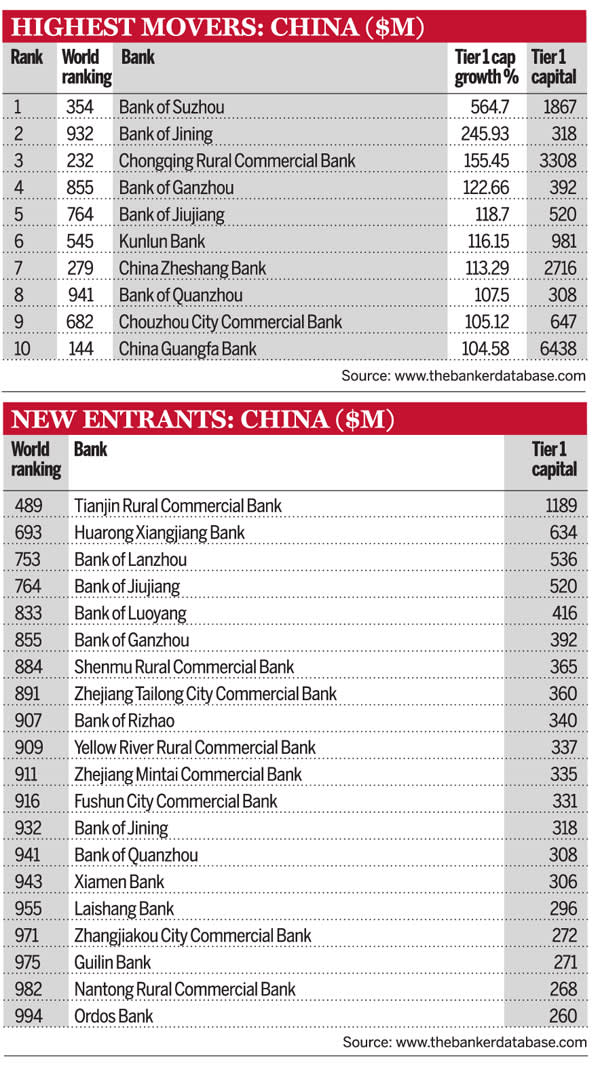The seemingly endless ascendancy of Chinese banks has been a perennial feature of the Top 1000 ranking in recent years. This year is no exception, and the country's financial institutions are making their presence felt all the way to the top. An unprecedented three Chinese banks made it into the Top 1000 ranking's top 10.
The statistics speak for themselves. This year, Chinese banks accounted for 101 spots in the Top 1000 World Banks ranking (up from 84 in 2010), and 15 of the top 25 highest movers. Bank of Suzhou, Bank of Jining and Chongqing Rural Commercial Bank taking second, third and fourth positions, respectively, in the highest movers table, though Agricultural Bank of China's rise is also notable, leaping 14 places to 14th globally following an initial public offering last year.
Editor's choice
There was little major jockeying for position within the Chinese top 25, although there were some new entrants, including Chongquing Rural Commercial Bank and China Zheshang Bank. Additionally, the lowest ranked member of the Chinese top 25 was 315th overall; in 2010 the 25th largest Chinese bank was ranked 419th.
Nevertheless, Chinese banks did forfeit one accolade; Japan's Mitsubishi UFJ Financial Group reclaimed its position as the highest ranking of any Asia-Pacific bank, after losing the title to Industrial Commercial Bank of China last year. However, Mitsubishi UFJ's rise is, in part, due to more up-to-date data being available on the Japanese banking sector.
As with last year, China’s success is particularly striking when measured against the performance of its counterparts in the BRIC (Brazil, India, Russia, China) economic grouping. Between them Brazil, Russia and India only managed 68 banks in the Top 1000.
On paper at least, this year’s results should put paid to some of the concerns that were evident last year about the soundness of China's banking sector. Last year’s results noted relatively low capital-to-asset ratios – generally considered a measure of soundness – among Chinese banks. The situation has now improved, possibly as a result of the government's monetary tightening, and the sector now has an average capital-to-asset ratio of 7.01%, up from 4.86%. It is a major improvement, but the figure remains below the global average of 8.49%.
At just 1.09%, Chinese banks' non-performing loan-to-total loan ratio is startlingly low, down from 1.54% in 2010 and less than half the overall average of 2.54%. However, as The Banker noted in last year’s results, some market analysts are sceptical that this is a reliable indicator of the Chinese banking sector’s strength, due to the growth of unreported lending or rolling of delinquent loans to disguise non-payment.











